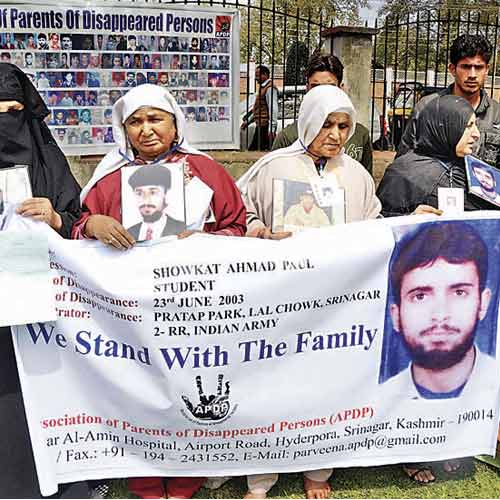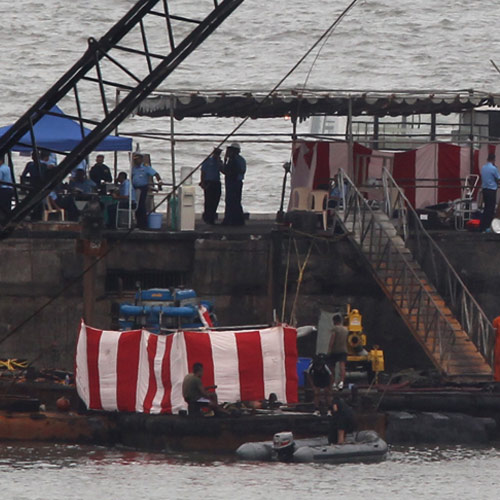
Thai authorities have failed to honor past pledges to resolve cases of enforced disappearance and hold those responsible to account, Human Rights Watch said today.
August 30, 2013 is the International Day of the Disappeared.
The government of Prime Minister Yingluck Shinawatra signed the International Convention for the Protection of All Persons from Enforced Disappearance on January 9, 2012, but since then there has been no progress in the parliament to ratify this important human rights treaty.
The Thai penal code still does not recognise enforced disappearance as a criminal offense.
''For many years Thai officials have committed enforced disappearances with little fear of being held to account for their actions,'' said Brad Adams, Asia director at Human Rights Watch.
''The government proclaims its opposition to this heinous crime, but has done nothing to end it.''
For instance, Nasulan Pi was last seen on January 17, 2012, at a teashop near his house in Joh Ai Rong district, Narathiwat province, when two armed men in military uniform forced him into a car and drove off.
His fate and whereabouts remain unknown. Nasulan is the 39th person reported ''disappeared'' since 2002 in connection with the government's counterinsurgency operations in Thailand's southern border provinces.
In March 2007, Human Rights Watch published a report detailing 22 cases of enforced disappearance that strongly implicated the Thai security forces. In none of these cases has there been a successful criminal prosecution of the perpetrators.
Under international law, a state commits an enforced disappearance when government officials take a person into custody and then deny holding the person, or conceal or fail to disclose the person's whereabouts.
Family members and lawyers are not informed of the person's whereabouts, well-being, or legal status.
''Disappeared'' people are often at high risk of torture, especially when they are detained outside of formal detention facilities such as police jails and prisons.
Enforced disappearances occur beyond Thailand's southern border provinces, Human Rights Watch said.
The Justice Peace Foundation, a well-respected Thai human rights group, has documented enforced disappearance cases in other parts of the country since 2011 - including 12 people from the northern region, 5 from the western region, and seven from the northeastern region.
''The many unresolved enforced disappearance cases show the failure of justice in Thailand,'' Adams said.
''The Yingluck government should end this terrible abuse and turn its promise for justice into action.''
Adopting the policy of the earlier government of Gen. Surayud Chulanont in 2007, the Yingluck government since 2012 has provided financial assistance to the families of the disappeared in the southern border provinces.
But offering money is no substitute for serious investigations into the whereabouts of the forcibly disappeared and appropriate prosecutions of those responsible, Human Rights Watch said.
Specifically, Human Rights Watch called on the Thai government to undertake the following measures to end impunity for enforced disappearances:
..Promptly ratify the International Convention for the Protection of All Persons from Enforced Disappearance.
..Urgently adopt all necessary legislation, regulations and other measures, including making enforced disappearances a criminal offense, to fully comply with the convention even before its ratification.
..Ensure that the police and prosecutors conduct prompt, competent, and impartial investigations into all allegations of enforced disappearances.
..Prosecute all officials, regardless of rank, found responsible for enforced disappearances and other abuses, including those ordering enforced disappearances or who knew or should have known about such abuses but took no action to prevent or prosecute them.
..Ensure that all persons detained by the police and the military are held at recognised places of detention, and are not subjected to torture or cruel, inhuman or degrading treatment. Upon detention, their whereabouts should immediately be made known to family and legal counsel. They should be allowed contact with family and unhindered access to legal counsel of their choice.
..Provide prompt, fair, and adequate compensation for the victims and family members of those who have disappeared or were otherwise arbitrarily detained.
..Strengthen the independence and capacity of the police, the Justice Ministry's Department of Special Investigation, prosecutors, and the National Human Rights Commission to ensure more thorough and effective investigations and public reporting of allegations of enforced disappearances and other human rights abuses.
..Invite the United Nations Special Rapporteurs on torture and on extrajudicial, summary or arbitrary executions, and the UN Working Groups on enforced and involuntary disappearances and on arbitrary detentions, to Thailand to investigate and report on the situation. Recommendations of these special rapporteurs and working groups should be implemented in a timely manner.
''Thailand should make resolving enforced disappearances a top human rights priority,'' Adams said. ''Dozens of families across the country who are waiting for answers expect no less.''
Friday 30 August 2013
http://phuketwan.com/tourism/thailand-day-disappeared-says-rights-group-18724/













